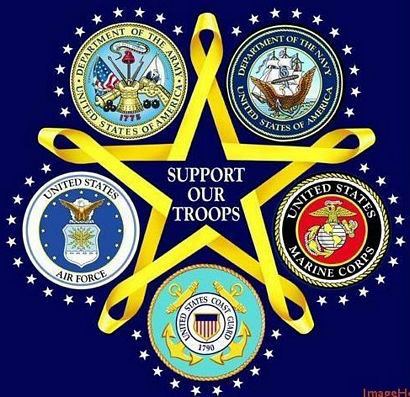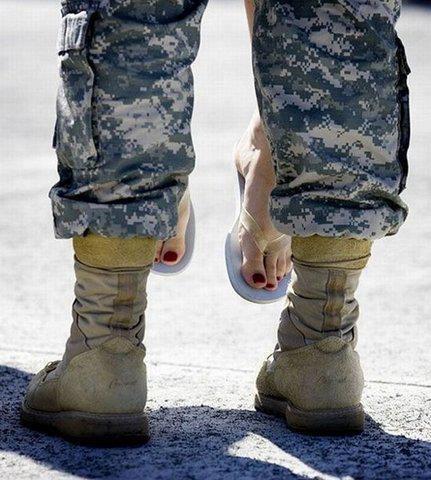

Gene Simmons Military Salute
YouTube
WE LOVE YOU ALL!!!

Troops Having a Bit of Fun
Video





The Kitchen Debate! Castro! Christian Herter at the State Department! The Fifties were closing on a quiet note. After leaving office, Eisenhower was asked how he managed to guide the country through a perilous period of Cold War that could have turned hot at any moment. Ike smiled and said, “It wasn’t easy.”
Sarah Vaughan (1924-90) came by her musical talent honestly. Her father played guitar and piano, and her mother sang in the church choir. They were part of the Southern black diaspora following World War I when white attitudes toward race hardened in the South. They moved from Virginia to Newark (NJ) for safety.
Sarah began piano lessons at age seven, sang in the church choir and played piano for rehearsals and services. She developed an early love for popular music on records and the radio. In the 1930s, Newark had a very active music scene, and Sarah saw bands that played in the city. By her mid-teens, she ventured illegally into Newark’s clubs and performing as a pianist and singer, a career path similar to Billie Holiday. She dropped out of high school during her junior year to concentrate on music. Around this time, she and her friends ventured across the Hudson River to hear big bands at the Apollo Theater in Harlem.
Sarah’s friend, Doris Robinson, joined her on her trips into New York. In the fall of 1942, Sarah suggested that Doris enter the Apollo Theater amateur night contest. Sarah accompanied Doris on piano, and Doris won second prize. Sarah later decided to go back, compete as a singer and won. The prize was $10 and the promise of a week’s engagement at the Apollo. Sarah was contacted by the Apollo in the spring of 1943 to open for Ella Fitzgerald.
Some time during her week of performances at the Apollo, she was introduced to bandleader and pianist Earl “Fatha” Hines, After a brief tryout at the Apollo, Hines officially replaced his current singer with Vaughan.
Sarah spent the remainder of 1943 and part of 1944 touring the country with Fatha’s band that also featured baritone Billy Eckstine. She was hired as a pianist so that Fatha could hire her under the jurisdiction of the American Federation of Musicians rather than the American Guild of Variety Artists, but after Cliff Smalls joined the band as trombonist and pianist, Sarah’s duties became limited exclusively to singing. The Earl Hines band in this period is remembered as an incubator of bebop, as it included trumpeter Dizzy Gillespie, saxophonist Charlie Parker and trombonist Bennie Green.
Sarah left Hines for Eckstine's band in 1944, giving her an opportunity to develop her musicianship. Eckstine's band also afforded her a recording opportunity. Critic and producer Leonard Feather asked her to cut four sides under her own name backed by a septet that included Dizzy Gillespie and Georgie Auld, who decades later would become the real star of the movie “New York, New York” with his wonderfully sour performance.
Sarah officially left the Eckstine band in late 1944 to pursue a solo career, although she remained close to Eckstine personally and recorded with him frequently throughout her life.
She began her solo career in 1945 by freelancing in clubs on New York’s famed 52nd St. and then recording for a variety of labels with some of the greatest musicians in jazz.
After years recording for small boutique labels, Sarah signed with Columbia. These were the glory years, producing commercial and critical success. She packed clubs around the country throughout the late 1940s and early 1950s. She transitioned seamlessly to TV in its early days but left Columbia due to artistic differences.
In 1953, she signed with Mercury. She would record commercial material for the Mercury label and more jazz-oriented material for its subsidiary EmArcy. Both were successful. This was one of them.